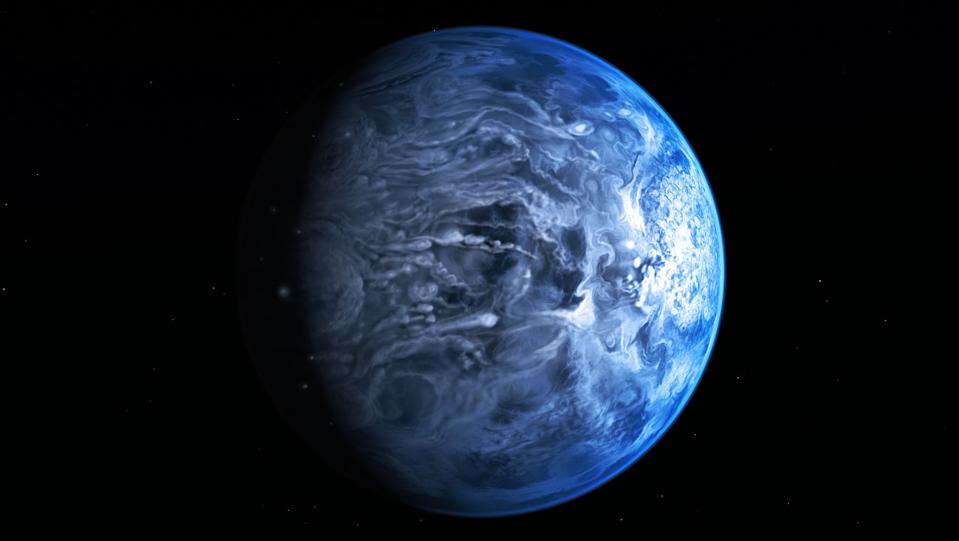
There may be as many as one Earth-like planet for every five Sun-like stars in the Milky Way Galaxy, ... [+]
What if 18% of Sun-like stars had an Earth-like planet?
That would means as many as six billion Earth-like planets in our Milky Way galaxy.
That’s the latest mathematical estimation from a group of astronomers at the University of British Columbia, which have extrapolated from data from NASA’s now-dead Kepler space telescope.
It comes in the same week that astronomers at the University of Nottingham estimated that there could be around 36 ongoing intelligent civilizations in our Milky Way galaxy.
NASA’s Kepler mission helped find thousands of exoplanets by studying 200,000 stars during its decade-long mission, which ended in 2018. It’s thus far the only mission capable of finding and characterizing Earth-sized planets in year-long orbits around Sun-like stars. It found the majority of the 4,164 exoplanets found so far.
Unlike the University of Nottingham estimation, which included planets around red dwarf (M-type) stars, the paper published this week in The Astronomical Journal only considers planets orbiting Sun-like (G-type) stars.
The Milky Way contains between 100 and 400 billion stars; about 70% are red dwarf stars—which are smaller, dimmer, and tend to flare—but a much smaller fraction are Sun-like stars.
“Our Milky Way has as many as 400 billion stars, with seven per cent of them being G-type,” said Jaymie Matthews, an astronomer at UBC. “That means less than six billion stars may have Earth-like planets in our Galaxy.”
To be clear, the scientists didn’t “discover” anything, but simply place an upper limit on estimating how many Earth-like planets there could be around Sun-like stars. “My calculations place an upper limit of 0.18 Earth-like planets per G-type star,” says UBC researcher Michelle Kunimoto, co-author of the study.
Kunimoto found 17 “new” exoplanets from old Kepler data earlier this year:
That’s a hit-rate of 18%—far higher than the 2% of potentially habitable planets per Sun-like star estimated previously.
To be considered Earth-like, a planet must be rocky and roughly Earth-sized, and orbit in the habitable zones of its star. “Habitable zone” is defined as being the zone in which liquid water could exists on its surface.
So how did the researchers do it?
Earth-like planets can be easily missed by planet-hunting telescopes because they’re small and orbit far from their stars. Long orbits are also an issue; telescopes need to monitor stars for a minimum of several years to observe a few transits (a dip in the brightness of a star as a planet passes in front of it), and so confirm their existence. So the catalogues we have from Kepler only show a fraction of what’s possibly out there.
Cue “forward modeling,” a mathematical technique that Kunimoto used to simulate the full population of exoplanets around the stars Kepler searched. “I marked each planet as “detected” or “missed” depending on how likely it was my planet search algorithm would have found them,” she said. “Then I compared the detected planets to my actual catalogue of planets. If the simulation produced a close match, then the initial population was likely a good representation of the actual population of planets orbiting those stars.”
The paper concluded an upper limit of <0.18 potentially habitable planets per Sun-like star. “Upon consideration of the assumptions made for our occurrence rate calculations, this upper limit should be robust to ∼10%,” reads the paper.
Wishing you clear skies and wide eyes.
https://www.forbes.com/sites/jamiecartereurope/2020/06/17/there-could-be-an-earth-like-planet-for-every-five-sun-like-star-in-our-galaxy-say-scientists/
2020-06-17 14:42:09Z
52780855028799
Bagikan Berita Ini














0 Response to "There Could Be An Earth-Like Planet For Every Five Sun-Like Star In Our Galaxy, Say Scientists - Forbes"
Post a Comment